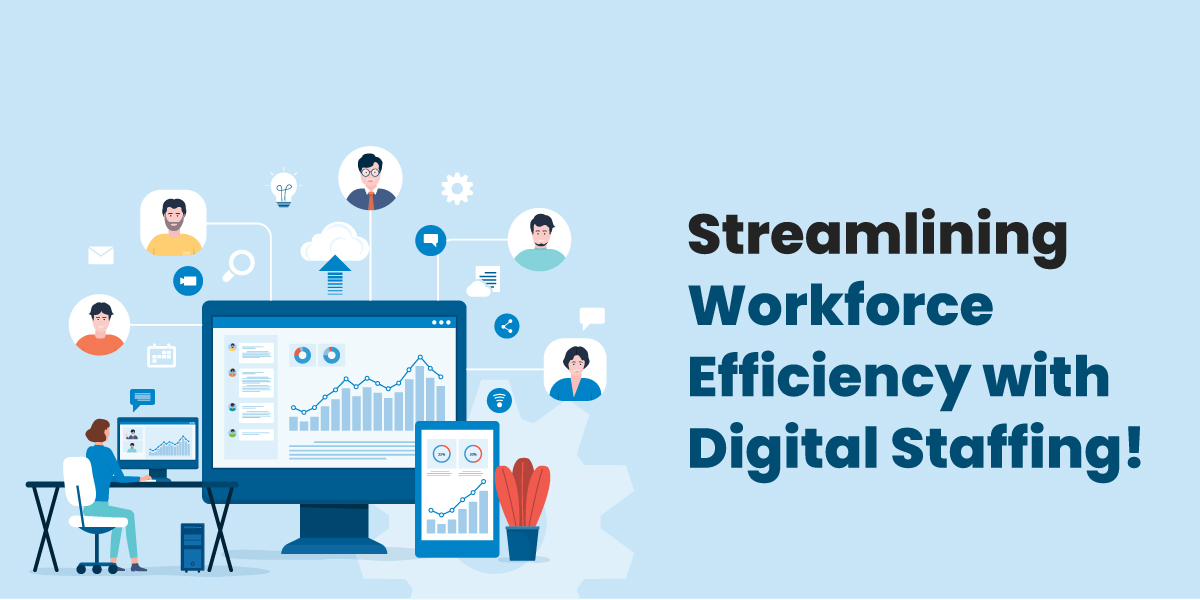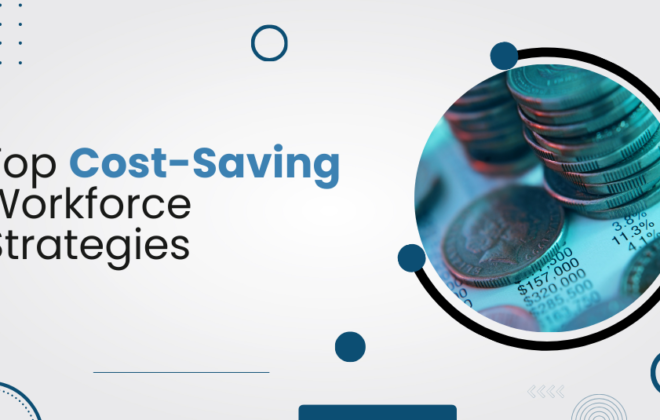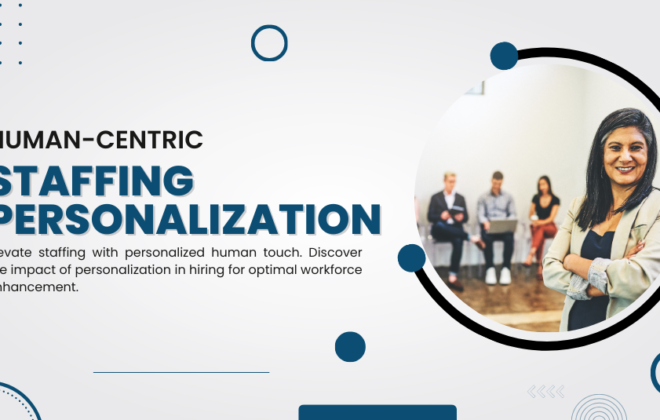Optimizing Workforce Efficiency through Digital Staffing Solutions in State and Local Government
In today’s fast-paced world, the need for efficient workforce management is paramount, especially in state and local government agencies. With limited resources and growing demands, these agencies must find innovative ways to streamline their operations. One solution that has become increasingly popular is the implementation of digital staffing solutions. By leveraging technology and data-driven processes, state and local government agencies can optimize their workforce efficiency, improve productivity, and better serve their constituents. In this article, we will explore the benefits and best practices of implementing digital staffing solutions in state and local government organizations.
- Understanding the Challenges of Workforce Management in Government
Managing a workforce in state and local government agencies comes with its own unique set of challenges. These organizations often face budget constraints, complex regulatory environments, and the need to deliver essential public services. Additionally, workforce planning, recruitment, and retention can be daunting tasks. Traditional methods of staffing can be time-consuming and inefficient and may result in suboptimal workforce allocation.
- The Role of Digital Staffing Solutions in Government Agencies
Digital staffing solutions offer a range of tools and technologies that empower government agencies to overcome the challenges of workforce management. These solutions encompass various aspects, including applicant tracking systems, workforce analytics, performance management tools, and scheduling software. By leveraging these technologies, agencies can automate and optimize critical processes, resulting in improved workforce efficiency.
- Streamlining Recruitment and Hiring Processes
Digital staffing solutions provide state and local government agencies with powerful tools to streamline their recruitment and hiring processes. Applicant tracking systems enable automated job postings, resume screening, and applicant ranking based on predefined criteria. These systems significantly reduce the time and effort required to identify qualified candidates, ensuring a more efficient and objective hiring process.
- Enhancing Workforce Planning and Allocation
Efficient workforce planning and allocation are crucial for government agencies to meet their service demands while maximizing resource utilization. Digital staffing solutions offer sophisticated analytics and forecasting capabilities that enable agencies to make data-driven decisions. By analyzing historical data, current workforce performance, and future needs, agencies can identify skill gaps, optimize staffing levels, and allocate resources more effectively.
- Empowering Employee Engagement and Performance
Digital staffing solutions also play a pivotal role in empowering employee engagement and performance within government agencies. Performance management tools provide a platform for setting goals, tracking progress, and providing real-time feedback. This fosters a culture of transparency, accountability, and continuous improvement, leading to increased employee satisfaction, productivity, and retention.
- Improving Scheduling and Shift Management
Efficient scheduling and shift management is vital in ensuring optimal workforce utilization, particularly for agencies that operate 24/7 or have varying service demands. Digital staffing solutions offer advanced scheduling capabilities that consider factors such as employee availability, skills, certifications, and workload requirements. By automating scheduling processes and enabling self-service options, these solutions reduce scheduling conflicts, improve employee work-life balance, and enhance overall operational efficiency.
- Ensuring Compliance with Regulatory Requirements
State and local government agencies must adhere to various regulatory requirements related to workforce management, such as fair employment practices, equal opportunity policies, and labor laws. Digital staffing solutions provide built-in compliance features that help agencies stay updated and ensure adherence to these regulations. This reduces the risk of non-compliance, legal disputes, and associated penalties.
- Best Practices for Implementing Digital Staffing Solutions
To successfully implement digital staffing solutions in state and local government agencies, certain best practices should be followed:
- Conduct a thorough needs assessment to identify pain points, requirements, and goals.
- Involve key stakeholders throughout the implementation process to ensure buy-in and collaboration.
- Choose a digital staffing solution that aligns with the agency’s specific needs and scalability requirements.
- Provide comprehensive training and support to employees to ensure successful adoption and maximize benefits.
- Continuously monitor and evaluate the effectiveness of the solution, making necessary adjustments as needed.
How Infojini Can Help
As a leading provider of digital staffing solutions, Infojini is well-equipped to assist state and local government agencies in optimizing their workforce efficiency. With our extensive experience and expertise in the field, we offer a comprehensive suite of services tailored to meet the specific needs of government organizations. Below are some of our key features:
- Customized digital staffing solutions tailored to government agencies’ specific needs.
- Utilization of cutting-edge technology for efficient workforce management.
- Seamless integration into existing systems and workflows.
- Scalable and flexible solutions for agencies of all sizes.
- Ongoing support and maintenance for smooth operation and assistance.
Infojini is a trusted partner that can help state and local government agencies optimize their workforce efficiency through digital staffing solutions. With our customized approach, cutting-edge technology, seamless integration, scalability, and ongoing support, we are committed to empowering government organizations to streamline their operations, enhance productivity, and deliver exceptional public services to their constituents. Contact Infojini today to learn more about how we can assist you in achieving your workforce optimization goals.
Conclusion
Optimizing workforce efficiency is crucial for state and local government agencies to deliver essential services effectively. By embracing digital staffing solutions, these agencies can streamline their recruitment processes, enhance workforce planning, improve employee engagement and performance, optimize scheduling, and ensure compliance with regulatory requirements. Implementing these solutions with the best practices in mind can pave the way for improved operational efficiency, cost savings, and better outcomes for both agencies and their constituents. As state and local government agencies continue to embrace digital transformation, the adoption of digital staffing solutions will play a pivotal role in achieving their goals and delivering high-quality public services efficiently.
Related Posts
Subscribe For Updates
Categories
- Accountant
- AI
- Automation
- Awards and Recognitions
- Blue Collar Staffing
- Burnouts
- Campus Recruiting
- Cloud
- Co-Ops agreements
- Company Culture
- Compliance
- contingent workforce
- Contingent Workforce
- COVID-19
- Cyber Security Staffing
- Data Strategy
- Digital Transformation
- direct sourcing
- Distributed Workforce
- Diversity
- Diversity & Inclusion
- Economy
- Events & Conferences
- fleet industry
- Gig Economy
- Girls in Tech
- Global Talent Research and Staffing
- Government
- Healthcare
- Healthcare Staffing
- Hiring Process
- Hiring Trends
- Home Helathcare
- HR
- HR Practices
- HR Tech
- IT
- Labor Shortages
- Life Science
- Local Governments
- News
- Nursing
- Payroll Staffing
- Public Sectors
- Recruiting
- Remote Work
- Skill Gap
- SMB Hiring
- Snowflake
- Staffing
- Staffing Augmentation
- Staffing Challenges
- Talent ROI
- Tech Staffing
- Technology
- Tips & tricks
- Total Talent Management
- UI/UX Design
- Uncategorized
- Veteran Staffing
- Veterans Hiring
- Veterans Hiring
- Workforce Management
Recent Posts
- Automation in Recruiting: From Chatbots to Predictive Screening
- Gig Economy Expansion: The Impact on Talent Pools and Business Models
- Skills-Based Hiring: Why Credentials Alone Don’t Cut It in 2025
- Procurement 3.0: AI & Intelligent Automation in 2025
- Q3 Is Here: Is Your Contingent Workforce Strategy Falling Behind?
Newsletter
Archive
- September 2025
- August 2025
- June 2025
- April 2025
- March 2025
- December 2024
- November 2024
- October 2024
- September 2024
- August 2024
- July 2024
- June 2024
- May 2024
- April 2024
- March 2024
- February 2024
- January 2024
- December 2023
- November 2023
- October 2023
- September 2023
- August 2023
- July 2023
- June 2023
- May 2023
- April 2023
- March 2023
- February 2023
- December 2022
- November 2022
- October 2022
- September 2022
- August 2022
- July 2022
- June 2022
- November 2021
- October 2021
- September 2021
- August 2021
- July 2021
- June 2021
- May 2021
- April 2021
- March 2021
- February 2021
- January 2021
- December 2020
- November 2020
- October 2020
- September 2020
- August 2020
- July 2020
- June 2020
- May 2020
- April 2020
- March 2020
- February 2020
- January 2020
- December 2019
- November 2019
- October 2019
- September 2019
- August 2019
- July 2019
- June 2019
- May 2019
- January 2019
- December 2018
- November 2018
- October 2018
- September 2018
- August 2018
- July 2018
- June 2018
- May 2018
- April 2018
- March 2018
- February 2018
- January 2018
- December 2017
- November 2017
- October 2017
- September 2017
- August 2017
- July 2017
- June 2017
- May 2017
- November 2016
- October 2016




